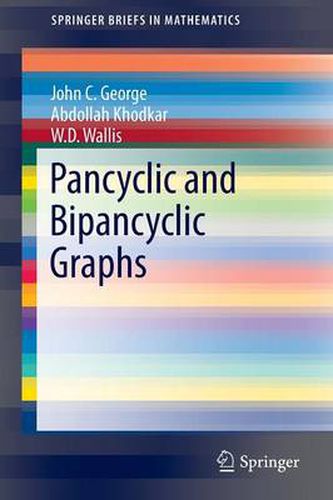Readings Newsletter
Become a Readings Member to make your shopping experience even easier.
Sign in or sign up for free!
You’re not far away from qualifying for FREE standard shipping within Australia
You’ve qualified for FREE standard shipping within Australia
The cart is loading…






This title is printed to order. This book may have been self-published. If so, we cannot guarantee the quality of the content. In the main most books will have gone through the editing process however some may not. We therefore suggest that you be aware of this before ordering this book. If in doubt check either the author or publisher’s details as we are unable to accept any returns unless they are faulty. Please contact us if you have any questions.
This book is focused on pancyclic and bipancyclic graphs and is geared toward researchers and graduate students in graph theory. Readers should be familiar with the basic concepts of graph theory, the definitions of a graph and of a cycle. Pancyclic graphs contain cycles of all possible lengths from three up to the number of vertices in the graph. Bipartite graphs contain only cycles of even lengths, a bipancyclic graph is defined to be a bipartite graph with cycles of every even size from 4 vertices up to the number of vertices in the graph. Cutting edge research and fundamental results on pancyclic and bipartite graphs from a wide range of journal articles and conference proceedings are composed in this book to create a standalone presentation.
The following questions are highlighted through the book:
What is the smallest possible number of edges in a pancyclic graph with v vertices?
When do pancyclic graphs exist with exactly one cycle of every possible length?
What is the smallest possible number of edges in a bipartite graph with v vertices?
When do bipartite graphs exist with exactly one cycle of every possible length?
$9.00 standard shipping within Australia
FREE standard shipping within Australia for orders over $100.00
Express & International shipping calculated at checkout
This title is printed to order. This book may have been self-published. If so, we cannot guarantee the quality of the content. In the main most books will have gone through the editing process however some may not. We therefore suggest that you be aware of this before ordering this book. If in doubt check either the author or publisher’s details as we are unable to accept any returns unless they are faulty. Please contact us if you have any questions.
This book is focused on pancyclic and bipancyclic graphs and is geared toward researchers and graduate students in graph theory. Readers should be familiar with the basic concepts of graph theory, the definitions of a graph and of a cycle. Pancyclic graphs contain cycles of all possible lengths from three up to the number of vertices in the graph. Bipartite graphs contain only cycles of even lengths, a bipancyclic graph is defined to be a bipartite graph with cycles of every even size from 4 vertices up to the number of vertices in the graph. Cutting edge research and fundamental results on pancyclic and bipartite graphs from a wide range of journal articles and conference proceedings are composed in this book to create a standalone presentation.
The following questions are highlighted through the book:
What is the smallest possible number of edges in a pancyclic graph with v vertices?
When do pancyclic graphs exist with exactly one cycle of every possible length?
What is the smallest possible number of edges in a bipartite graph with v vertices?
When do bipartite graphs exist with exactly one cycle of every possible length?